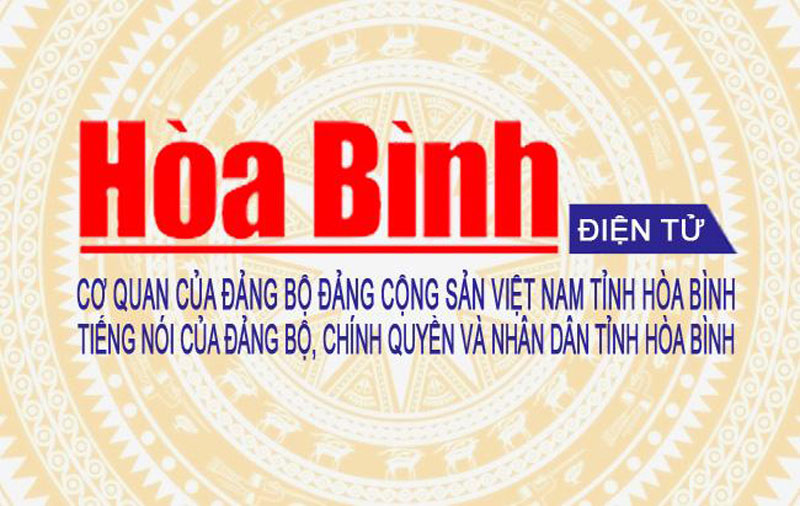
(HBĐT) - One of the strategic breakthroughs identified by the Mai Chau district’s Party Organisation in the resolution of its 26th congress for the 2020-2025 term is to improve the local business climate to spur investment attraction.
Right from the beginning of the term, the entire Party
Organisation has focused on administrative reforms, with a particular emphasis
on reforming administrative procedures, enhancing the responsibility of
officials and public servants, and reducing the time required to handle
administrative procedures by 30% compared to current regulations, gradually
meeting the needs by people and businesses.
With this approach, Mai Chau has made significant progress,
moving up from the 4th position in 2021 to the 2nd last year in the province
regarding the district-level competitiveness ranking and point.
Over the past nearly three years, the Mai Chau Party
Organisation's Executive Board and Party Committee’s Standing Board have issued
nine thematic resolutions, 15 regulations, 17 directives, four action
programmes, and numerous guiding documents to implement tasks in all areas.
At the end of June this year, the Party Organisation
conducted a midterm review of the implementation of the local 26th Party Congress
Resolution. Ha Cong Nghi, Permanent Deputy Secretary of the Mai Chau Party
Committee, affirmed the conference comprehensively assessed the current
situation, objectively evaluated the achievements and existing issues, and
identified solutions accordingly.
The Party Organisation has so far achieved and exceeded 13
out of the 20 targets of the resolution. Notably, the rates of economic growth
and forest coverage reached 13.7% and 65.44%, respectively. However, there are
two challenging targets, namely the urbanisation rate and state budget revenue
collection. Concerning the matters, Nghi pointed to the slow implementation of
the agricultural restructuring plan, difficulties facing the local new-style
rural building, and ineffective industrial operations, among others./.
In the spirit of "Party members go first, the people follow”, all households of Party members in the Doan Ket sub-region in Da Bac town, Da Bac district, voluntarily removed gates and fences, and donated land when the road expansion project passed through their properties. Inspired by their example, 68 households in the sub-region quickly followed suit, contributing over 1,400 sq.m of residential and perennial cropland to widen the main road through the residential area. The exemplary role of Party members in Doan Ket stands as a shining example of studying and following President Ho Chi Minh’s thought, morality, and lifestyle.
The Hoa Binh provincial People's Committee held a monthly meeting on May 29 to assess the implementation of socio-economic development tasks in the first six months of 2025, the progress of key projects, and some other important issues.
During his lifetime, President Ho Chi Minh always expressed his deep affection and special concern for children and youth. He once emphasized: "Caring for and educating children well is the responsibility of the entire Party and the entire people”; "First of all, the family (i.e. grandparents, parents, siblings) must do this job well”. "the Party Committees…, the Children’s Committee, the Youth Union, the education sector, and all related organizations must have specific plans to ensure children grow healthier and more progressive”. His teachings has been remaining valuable and serving as the guiding principles in the work of protecting, caring for, and educating children. In line with this ideology, Hoa Binh Province has continuously been prioritizing and investing resources in the well-being of children in recent years.
Mr. Nguyen Phi Long, the alternate Member of the Party Central Committee and Secretary of the Provincial Party Committee chaired the meeting of the Standing Committee of the Provincial Party Committee to provide opinions on several investment projects within the province. There was the attendance of Ms. Bui Thi Minh, the Permanent Deputy Secretary of the Provincial Party Committee and Chairwoman of the Provincial People’s Council; Mr. Bui Đuc Hinh, the Deputy Secretary of the Provincial Party Committee and Chairman of the Provincial People’s Committee and other members of the Standing Committee; the leaders from other departments, agencies, and some localities.
The Standing Board of the Vietnam Fatherland Front (VFF) Committee of Hoa Binh province held a meeting on May 28 to honour outstanding village elders, village heads, and reputable individuals from local ethnic minority and religious communities.
In mid-May, the provincial Museum organised an exhibition named "Duoi la co Dang Cong san Viet Nam quang vinh” (Under the flag of the glorious Communist Party of Vietnam). This meaningful activity took place in the joyful atmosphere to celebrate the country's major holidays and the Party congresses at all levels for the 2025-2030 term, towards the 14th National Party Congress.


![]()